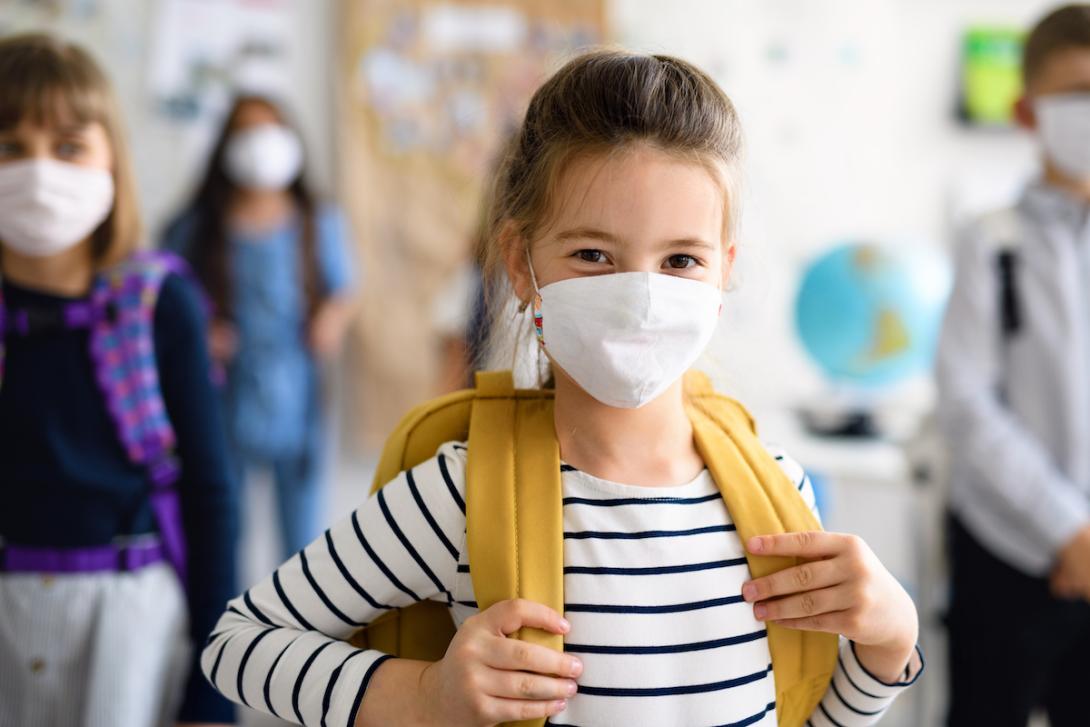
In the days leading up to Halloween, public health officials in Douglas County reported three students who attended schools offering in-person classes tested positive for coronavirus, one each at Winston Middle School, Tri-City Elementary and Coffenberry Middle School.
But only one of those cases appeared in the state’s weekly report of school-based cases the following Wednesday.
Since mid-September, the Oregon Health Authority has reported 85 cases of coronavirus linked to schools delivering in-person lessons. Last week alone, officials reported 26 new cases.
The Tri-City Elementary case was among them.
But the outbreaks at Winston and Coffenberry middle schools weren’t included in the state agency’s tally despite Douglas County officials identifying them and requiring the infected students, their peers and teachers enter a two-week quarantine.
“Public health works with (the Oregon Department of Education) to make sure that we are reporting the correct schools and this takes time,” Oregon Health Authority spokeswoman Delia Hernandez said.
Oregon Health Authority officials say they’re careful with their releases to maintain privacy for students and school staffers who contract the infectious disease. Some districts, like those in Coos Bay and the Douglas County town of Winston, publicly post about school-based cases on social media.
Others don’t.
The trickle of information from the state and patchwork of local announcements makes it difficult to pinpoint how and when public and private schools across the state experience outbreaks just as Gov. Kate Brown and state schools chief Colt Gill have moved to ease restrictions on in-person.
The lower thresholds Brown and Gill announced in late October could more than double the number of Oregon children who get face-to-face time with their teachers and peers in the coming weeks.
About 50,000 K-12 students have regularly seen the inside of a classroom since the beginning of the pandemic, Gill said. And only a handful of Oregon’s counties have met the metrics to allow in-person instruction since the Department of Education first published its guidance in mid-August.
Coronavirus hospitalizations skyrocket to new high as state reports 723 more cases, four deaths Monday.
National and global studies have shown outbreaks in schools don’t tend to become super-spreader events as long as schools require masks, physical distancing and hand-washing. And state education officials have noted that distance learning has proven woefully inadequate — in the Salem-Keizer district, half of the area’s high school seniors are on track to fail at least one class this quarter, according to the Salem Reporter.
Of the 26 new school-based coronavirus cases the Oregon Health Authority reported last week, nearly half were contracted prior to Oct. 25.
At least one infection in Coos Bay was first reported to Coos County health officials Oct. 18, more than two weeks before the state included it in its tally of school-based cases.
And an Oct. 20 case in Douglas County that made headlines and led to a teacher shortage that forced a rural high school to shutter for a day never made it into the state report.
Oregon Health Authority officials declined to explain why the latter case wasn’t included in the state’s school-based coronavirus tallies released Oct. 28 or Nov. 4.
Meanwhile, the nonprofit that provides public health services in Douglas County publishes daily reports that include school-based cases shortly after they’re confirmed with local districts.
The Oregon Department of Education requires schools to screen students for symptoms of coronavirus before they enter a building. If a student is suspected of having contracted the disease, they’re isolated and sent home.
If the student tests positive for the virus, school officials then provide their name, date of birth and contact information to the local public health department, which triggers an investigation and contact tracing efforts.
“The case investigation is crucial to determine if a case attended or worked at a school,” Hernandez said. “Furthermore, the case investigation is necessary to know if the case was at the school during their exposure or infectious period and if there are any close contacts identified.”
Peers and school employees who were in close contact with the infected student or staff member must quarantine for two weeks. The Department of Education then requires both the school and district to announce the infection to the wider community.
The department doesn’t specify how those announcements should be handled — they can be published on social media, an email to parents or a post on the school or district website.
In mid-October, Fern Ridge School District Superintendent Gary Carpenter posted about a case at Veneta Elementary that forced a group of children, their teacher and an instructional aid into a two-week self-isolation. The case made the evening news.
But it didn’t make the Oregon Health Authority’s Oct. 28 or Nov. 4 update on school-based coronavirus cases.
Although international studies have shown that schools aren’t hotspots for infection, experts say the key to safely reopening them is dependent on low rates of community spread.
Over the last few weeks, Oregon has set records in its rate of infection, averaging more than 700 cases per day. And on Nov. 6, Brown announced a two-week pause on social activity in Multnomah, Marion, Jackson, Malheur and Umatilla counties to slow the spread.
The governor’s order does not mention schools but limits indoor gatherings to 50 people or fewer, a number much higher than any classroom in Oregon can hold under Oregon Department of Education restrictions. Brown placed Clackamas and Washington counties on the list Monday.
--Eder Campuzano | 503-221-4344 | @edercampuzano | [email protected]
This story was first published by The Oregonian/OregonLive and is posted here through a content-sharing agreement.